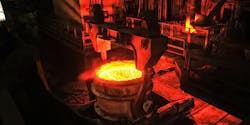Fed: Industrial Production Now Beats Pre-Pandemic Levels
U.S. industrial production surpassed pre-pandemic levels last month, according to data released Wednesday from the Federal Reserve.
The Fed’s latest report, issued September 15, shows industrial production in August hit 101.6% of average monthly production in 2017. The latest figure is 5.9 percentage points better than 12 months ago and 0.3 points better than February 2020, the last month unaffected by COVID-19.
Industrial production is calculated based on the productivity of three related sectors: manufacturing, mining, and utilities.
Manufacturing production rose by 0.2 points, 5.9 points better than 12 months ago and 1.0 point above its February 2020 level.
Production of motor vehicles increased in August as the seasonally adjusted annual rate rose to 9.53 million units, up from July’s annualized rate of 9.31 million trucks and automobiles and the 2020 average of 8.82 million.
Mining production slipped 0.6 points as oil and gas extraction in the Gulf of Mexico was hammered late in the month by Hurricane Ida but remained 10.3 points higher than it was in August 2020. And the utilities sector saw the highest percentage-point growth in August as demand for air-conditioning in the atypically warm month drove a 3.3 increase.
Despite the positive comparison to pre-pandemic times, the figures indicate something of a productivity slowdown compared to July. Industrial production rose 0.4 points in August, just half of the 0.8 points’ growth seen the month before.
According to the Federal Reserve, the slowdown—like the productivity dip in mining production—is due to Hurricane Ida. The category-5 hurricane that landed in Louisiana late last month caused blackouts for significant portions of Southeast Louisiana and forced petroleum, chemical, and plant factories to close.
Without the storm, the Fed estimates manufacturing production and overall industrial production would have grown by 0.4 and 0.7 points, respectively.
About the Author
IW Staff
Find contact information for the IndustryWeek staff: Contact IndustryWeek
